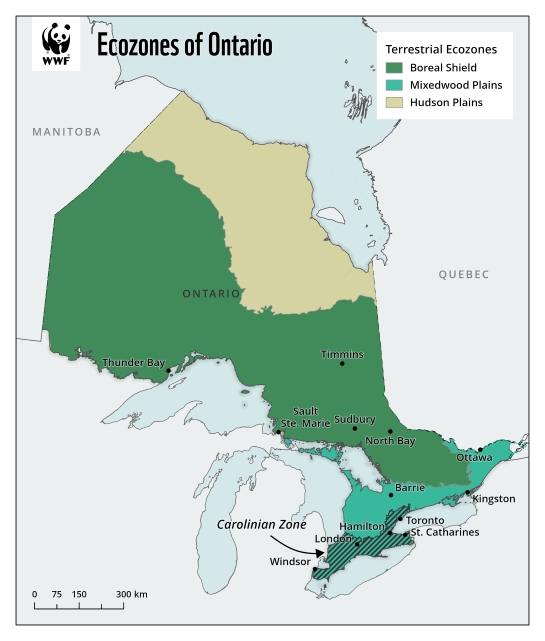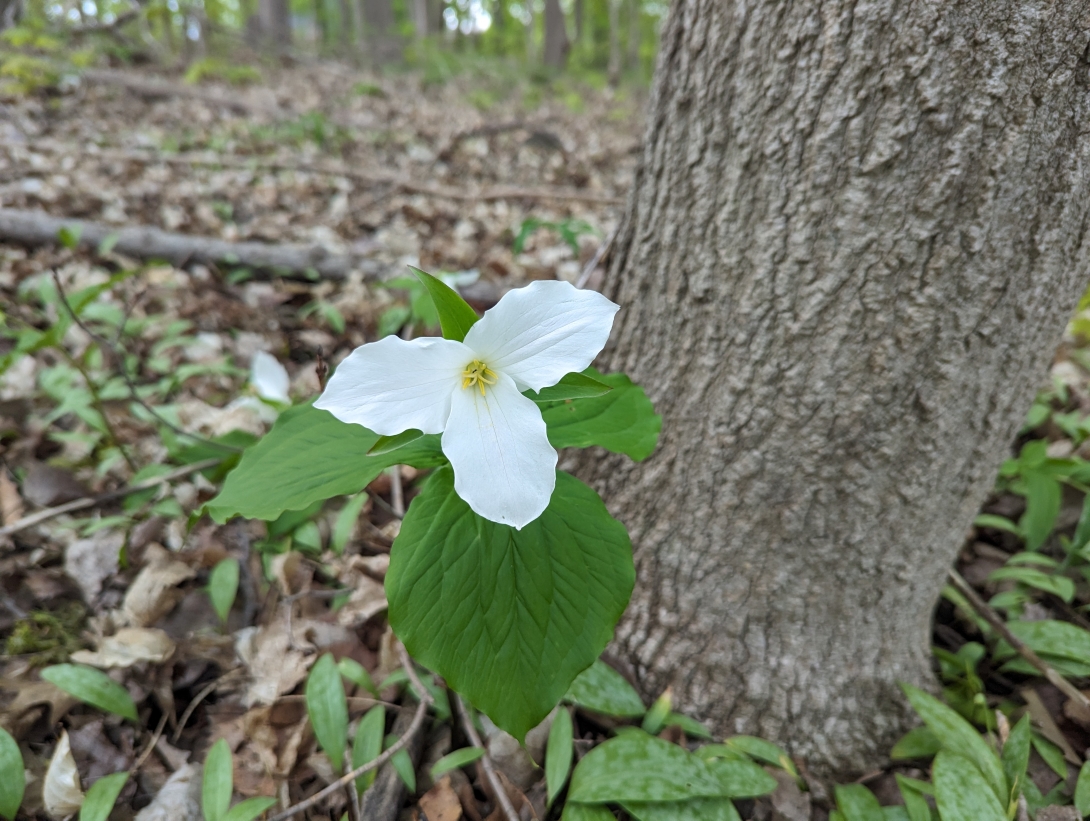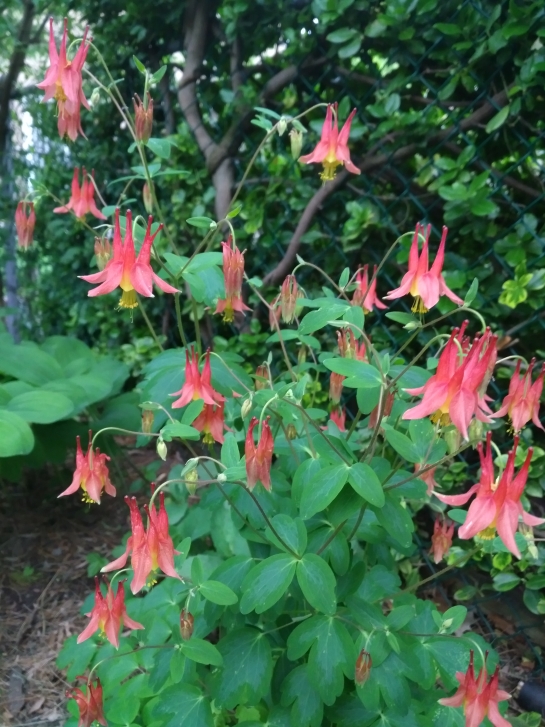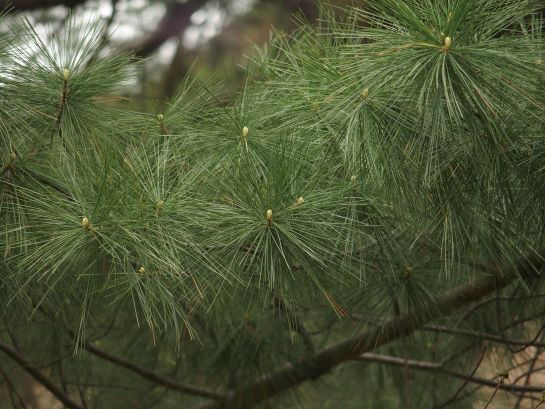Singing the praises of Ontario’s landscapes and native plants
By Ellen Jakubowski and Jarmila Becka Lee
Neil Young’s “Helpless” and the Tragically Hip’s “Bobcaygeon” may evoke quintessentially Ontarian scenes with a rising moon, birds overhead and constellations revealing themselves one star at time. But that Kawartha Lakes cottage country they describe is just one of the province’s song-worthy landscapes.

The northernmost of the province’s three terrestrial ecozones is the Hudson Plains, also known as the Hudson and James Bay Lowlands. This area’s vast peatlands store significant amounts of carbon, provide a “rest stop” for millions of migrating birds and hold cultural value for the First Nations communities that live there.
That Boreal Shield in the middle covers more than half of the province, blanketing it with coniferous, mixed and deciduous forests which provide habitat for iconic wildlife like moose and beavers.
Finally, the Mixedwood Plains ecozone is home to 92 per cent of the province’s (and 35 per cent of Canada’s) human population. Most of its landscapes have been transformed since European settlement; however, refuges for biodiversity remain, including in the Kawartha Lakes region celebrated in song and in the Carolinian ecoregion, where more rare plants and animals are found than anywhere else in the country.
Ontario’s natural wonders cover a large expanse, but efforts to restore them can start small, in our own parks, backyards and balcony planters. Discover a few of Ontario’s native plants and trees and the wildlife that they help to support below.
(To learn about native plants in some other provinces, check out our blog posts on B.C., Alberta, Saskatchewan, Manitoba, Quebec and New Brunswick.)
Large white trillium — a symbol of Ontario
This elegant species has been Ontario’s official flower since 1937. The “tri” in trillium hints at its distinctive three petals, three sepals (green outer parts of the flower) and three broad leaves near the top of the stem.
Look for large white trilliums (Trillium grandiflorum) blanketing the ground in moist wooded areas in April, May and early June. With a wide distribution through eastern Canada and the U.S., in Ontario this species is observed in the mixedwood plains and boreal shield ecozones.
Growing tips
If you have these trilliums in your yard, count yourself lucky! When growing them from seed, it can take four to 10 years to flower. You may be able to find mature plants for sale at specialized nurseries, but they are not widely available. To keep existing plants growing well, provide at least partial shade as well as leaf mulch in the spring and fall.
As for the large white trilliums in natural areas, you can help preserve these fragile plants by staying on trails as you admire them on springtime walks.

Benefits for wildlife
Trillium seeds grow a fatty structure called an elaiosome that attracts ants. The ants carry these seeds to their nests to feed the nutritious elaiosomes to their young, discarding and, in effect, sowing the seeds in the process. Thus, in using this food source, the ants help the plant to distribute its seeds.
Certain flies, beetles, bees and other insects eat pollen and nectar from large white trilliums, pollinating the plants in the process — another win-win relationship.
White-tailed deer and the caterpillars of some moth species also eat this plant.
Wild red columbine — an easy-to-grow favourite

Since large white trillium can be tricky to grow at home, here’s another native Ontario flower that’s just as beautiful but easier to add to your garden. Wild red columbine (Aquilegia canadensis) has red and yellow pendant-like flowers borne on slender stems rising from attractively lobed leaves. They bloom for two to four weeks starting in May and can be found in the mixedwood plains and boreal shield ecozones.
Growing tips
Wild red columbine can be purchased from nurseries or easily grown from seeds planted in fall or early spring. Many cultivars (varieties that have been selectively bred to enhance specific characteristics) are also widely available, so shop where native plants are sold to ensure you get the wild red columbine that will maximize benefits to your local wildlife. Columbines self-seed and you’ll likely find new ones popping up near your mature plants, which you can move to more suitable locations or share with nearby friends or family if needed.
This adaptable flower can tolerate a range of moisture conditions including drought, and grow in a range of soils including sandy ones, so long as the soil is well-drained and not too rich. Avoid full sun and overwatering.
Benefits for wildlife
Ruby-throated hummingbirds, skipper butterflies, sphinx and owlet moths and sweat bees all drink nectar from the wild red columbine’s flowers while finches eat its seeds.
Eastern white pine — Ontario’s provincial tree
The eastern white pine (Pinus strobus) — Ontario’s provincial tree — is easily recognizable, with striking height and a feathery, branched silhouette, the essence of which is perhaps best captured by the Group of Seven’s art.
These trees are found in the mixedwood plains and boreal shield ecozones in Ontario, as well as in Manitoba, Quebec and Atlantic Canada. They are fast growing and live for several hundreds of years. One study in Algonquin Park found evidence of white pines that were over 500 years old!

Growing tips
These adaptable trees can grow well in a range of moisture levels and soil types. They thrive in full sun but also tolerates a bit of shade. Eastern white pines grow quickly and can reach up to 40 metres in height, making them an excellent choice for adding more privacy or shade on your property. Seedlings are widely available at nurseries.
Benefits for wildlife
Pines provide food for many insects, including certain moth and butterfly caterpillars and larvae of sawflies, long-horned beetles, pine tree cricket and several weevils. Pine seeds are food for finches and the red-breasted nuthatch, as well as for squirrels and mice. The branches and needles are browsed by white-tailed deer and eastern cottontail rabbits.
The dense cover of eastern white pine also provides shelter for many birds.
Help restore native plant life in Ontario and across Canada
By growing native plants in your yard, container garden or community space, you can help restore wildlife habitats — in Ontario or wherever you live in Canada. Learn more and track your impact for nature by joining re:grow.


